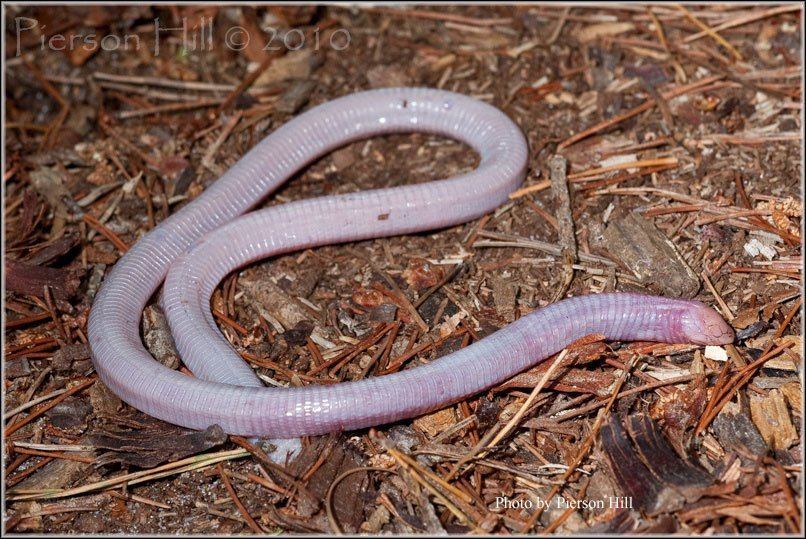The Florida Worm Lizard (Rhineura floridana) is neither a worm nor a lizard. It is the only member of the genus Rhineura. This odd little creature has no eyes. It spends most of its time underground and does not need vision. In the event of heavy rain, you may see these odd fellows above ground. They feed on any invertebrate they can, including spiders, earthworms, maggots, and ants. To make them even weirder, they are sex-less in that they are neither male nor female. They reproduce by a process called parthenogenesis. This means that they basically make clones of themselves. A benefit of this method is that they do not need to find a mate which could be difficult when you spend your life in the dirt. Our most common ancestors are the Amniota. This section of our clade represents animals that develop from an egg, either internal or external. The Florida worm lizard may not be the cutest creatures, but we think there is something lovable about these unique little underdogs.
Recent Posts
Archives
- March 2025
- February 2025
- January 2025
- December 2024
- November 2024
- September 2024
- August 2024
- June 2024
- May 2024
- March 2024
- February 2024
- January 2024
- December 2023
- November 2023
- October 2023
- August 2023
- July 2023
- June 2023
- May 2023
- April 2023
- March 2023
- February 2023
- January 2023
- December 2022
- November 2022
- October 2022
- September 2022
- August 2022
- July 2022
- June 2022
- May 2022
- April 2022
- March 2022
- February 2022
- January 2022
- December 2021
- November 2021
- October 2021
- September 2021
- August 2021
- July 2021
- May 2021
- April 2021
- March 2021
- January 2021
- December 2020
- October 2020
- September 2020
- August 2020
- July 2020
- May 2020
- April 2020
- March 2020
- February 2020
- January 2020
- December 2019
- November 2019
- October 2019
- September 2019
- July 2019
- June 2019
- May 2019
- April 2019
- March 2019
- February 2019
- December 2018
- November 2018
- October 2018
- July 2018
- April 2018
- December 2017
- October 2017
- September 2017
- August 2017
- July 2017
- June 2017
- May 2017
- April 2017
- March 2017
- February 2017
- January 2017
- November 2016
- October 2016
- September 2016
- June 2016
- May 2016
Categories
- Alligators and Crocodiles
- Amphibians
- Arachnids
- Be Bear Smart
- Bees and Wasps
- Birds
- Birds of Prey
- Bivalves
- Black Bear
- Blog
- Butterflies and Moths
- Childrens Activity Pages
- Cranes
- Crustaceans
- Domestic Species
- Doves and Pigeons
- Dragonflies
- Ducks and Geese
- Ecosystems
- educational materials
- Endangered
- Florida Animals
- Frogs and Toads
- Game Birds
- Geological Formations
- Hummingbirds
- In the Works
- Insects
- Lizards, Skinks, Geckos, and Anoles
- Mammals
- Mollusks
- Newsletter
- Open Letters
- Passerine Birds
- Posters
- Projects
- Recycle & Reuse
- Reptiles – Snakes
- Sea Birds
- Sealife
- shore birds
- Snakes
- Surveys
- Teachers
- Turtles
- Wading Birds
- Water
- Water Birds
- Wild Places
- Wild Plants
- Wildlife
- woodpeckers and sapsuckers
Post Categories
- Alligators and Crocodiles (2)
- Amphibians (2)
- Arachnids (14)
- Be Bear Smart (20)
- Bees and Wasps (11)
- Birds (62)
- Birds of Prey (15)
- Bivalves (1)
- Black Bear (6)
- Blog (197)
- Butterflies and Moths (31)
- Childrens Activity Pages (2)
- Cranes (1)
- Crustaceans (3)
- Domestic Species (1)
- Doves and Pigeons (3)
- Dragonflies (11)
- Ducks and Geese (13)
- Ecosystems (5)
- educational materials (1)
- Endangered (3)
- Florida Animals (73)
- Frogs and Toads (5)
- Game Birds (1)
- Geological Formations (4)
- Hummingbirds (1)
- In the Works (1)
- Insects (32)
- Lizards, Skinks, Geckos, and Anoles (9)
- Mammals (21)
- Mollusks (3)
- Newsletter (1)
- Open Letters (2)
- Passerine Birds (35)
- Posters (1)
- Projects (8)
- Recycle & Reuse (2)
- Reptiles – Snakes (13)
- Sea Birds (6)
- Sealife (10)
- shore birds (11)
- Snakes (2)
- Surveys (1)
- Teachers (16)
- Turtles (5)
- Wading Birds (15)
- Water (13)
- Water Birds (12)
- Wild Places (159)
- Wild Plants (98)
- Wildlife (61)
- woodpeckers and sapsuckers (7)



Recent Comments